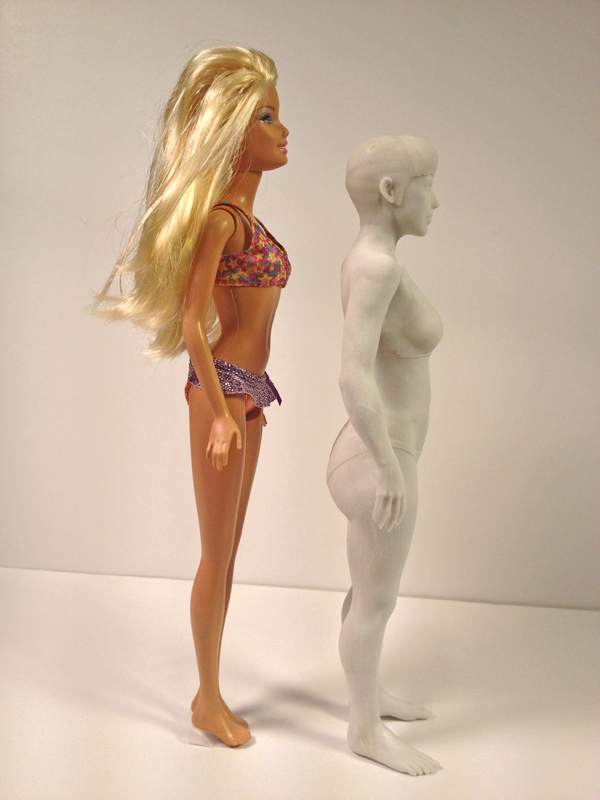—Amanda M. Czerniawski
Kalliopi Monoyios for Scientific American writes about artist Nickolay Lamm’s Barbie project, where he created a doll based on the measurements of a “real, healthy 19-year-old” and compared it side-by-side with a Barbie. He also hopes to create more dolls, representing a variety of body types, ethnicities, and genders.

His Lammily doll demonstrates how Barbie, along with fashion and media, distorts our sense of normal bodies by constructing an idealized body that is far from a natural one. Barbie, with her impossible physical measurements and proportions, presents an unattainable image of beauty; yet, her body type is depicted throughout the media landscape, including in popular animated films geared towards children. Monoyios laments, “Are we still stuck on the impossibly thin-waisted, big-boobed, bobbleheaded ideal of beauty? When can we let that go?” I would like to add: Can we let go not just a particular image of beauty but the concept of beauty itself?
Our culture places a high premium on the look and shape of women’s bodies. The female body, in particular, is constructed as an object to be watched. Barbie typifies this objectification with her limited mobility, implicit focus on dressing up, and her penchant for high heels. As a consequence of this intense focus on appearance, women experience their bodies as not solely for their pleasure and amusement but as under the constant gaze of others. This focus on the physical may lead to a separation of the mind from the body, i.e., disembodiment. This occurs when we are taught to think of our bodies as passive objects meant to be admired by others.
When women begin to hold themselves accountable for the proper display of their bodies, they risk becoming objects in their own body projects. They invest in and manipulate their bodies and engage in extensive body practices to cultivate their physiques, often towards these unattainable Barbie-like goals of perfection. If women do not feel like they measure up to this ideal, they may disconnect from their bodies in order to shield themselves from the pain associated with living in non-normative bodies that fail to match contemporary standards of beauty. Ultimately, many women often find themselves continually toiling away at their bodies without reaching the goal, for the fashion icons they aspire to emulate do not really exist but are, instead, carefully constructed and manipulated by the brush strokes of master aestheticians and computer technicians. We have forgotten (or simply ignored) that these kinds of bodies are fantastical images.
The Lammily doll aims to expand the notion of beauty to include average bodies, but does it help eliminate the engendered problem of disembodiment? While the website presents a photo slideshow of Lammily’s figure (including close-ups of her bust and rear-end in a teal bikini), it also stresses the doll’s articulated wrists, knees, elbows, and feet. At least Lammily may be able to do something besides pose and look pretty.
While Lammily may be a step in the right direction, ultimately, we need a doll that instills the lesson that we should not judge women and girls on the basis of their looks. We need a doll that does not sexualize or objectify women’s and girl’s bodies. Instead of being judged on their “good looks,” let us value women for their “good works,” in the home, the workplace, and the global beyond.
Amanda M. Czerniawski is Assistant Professor of Sociology at Temple University and the author of Fashioning Fat: Inside Plus-Size Modeling (forthcoming from NYU Press in January 2015).
